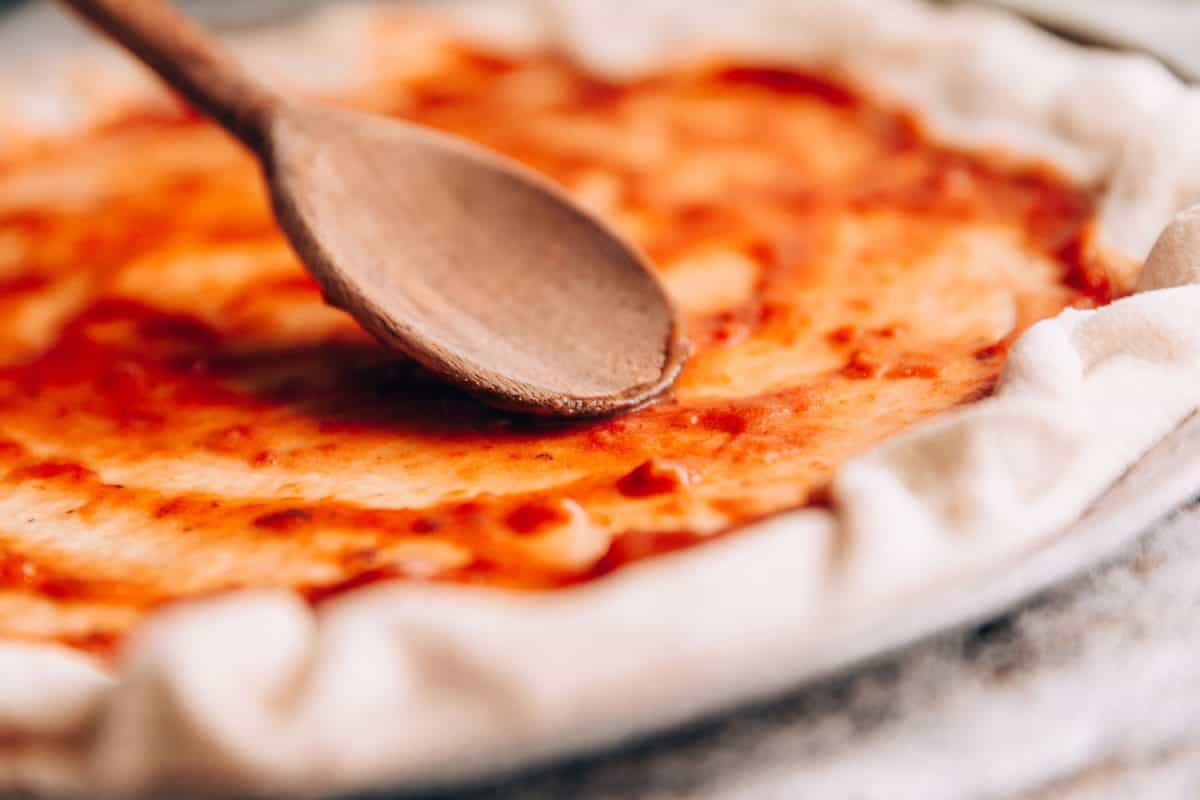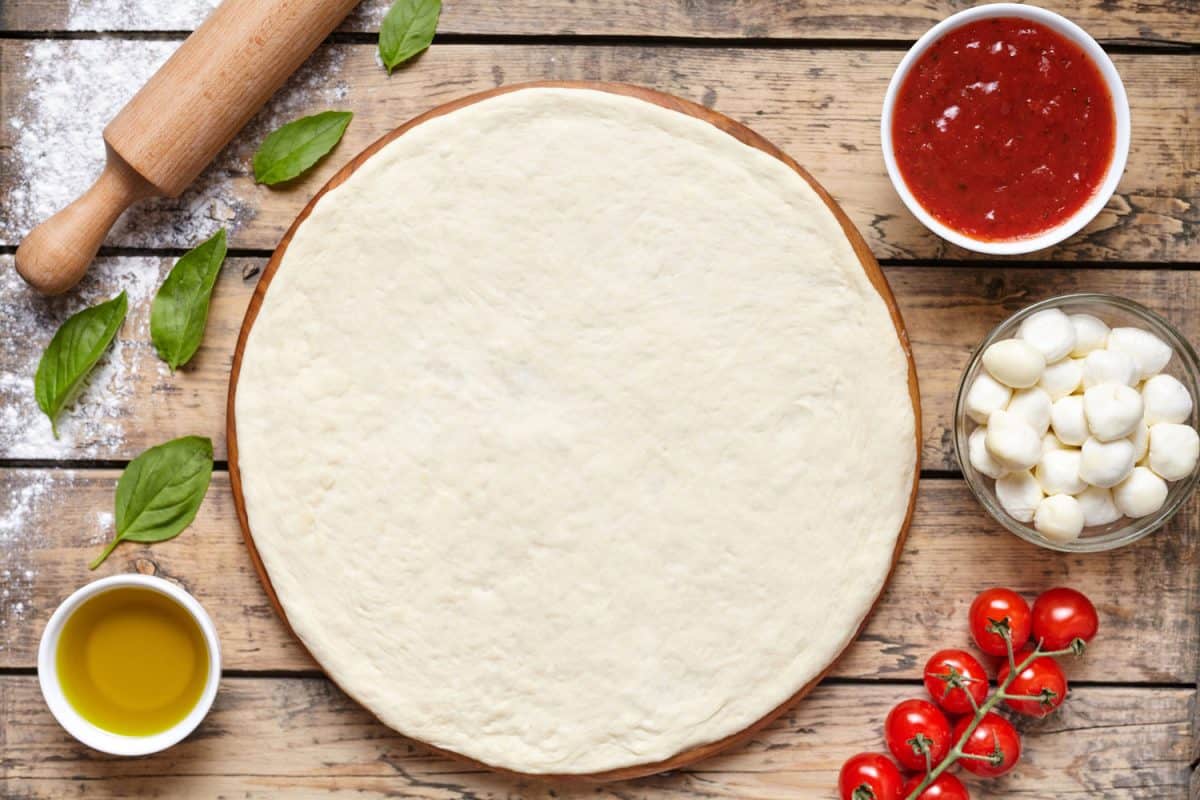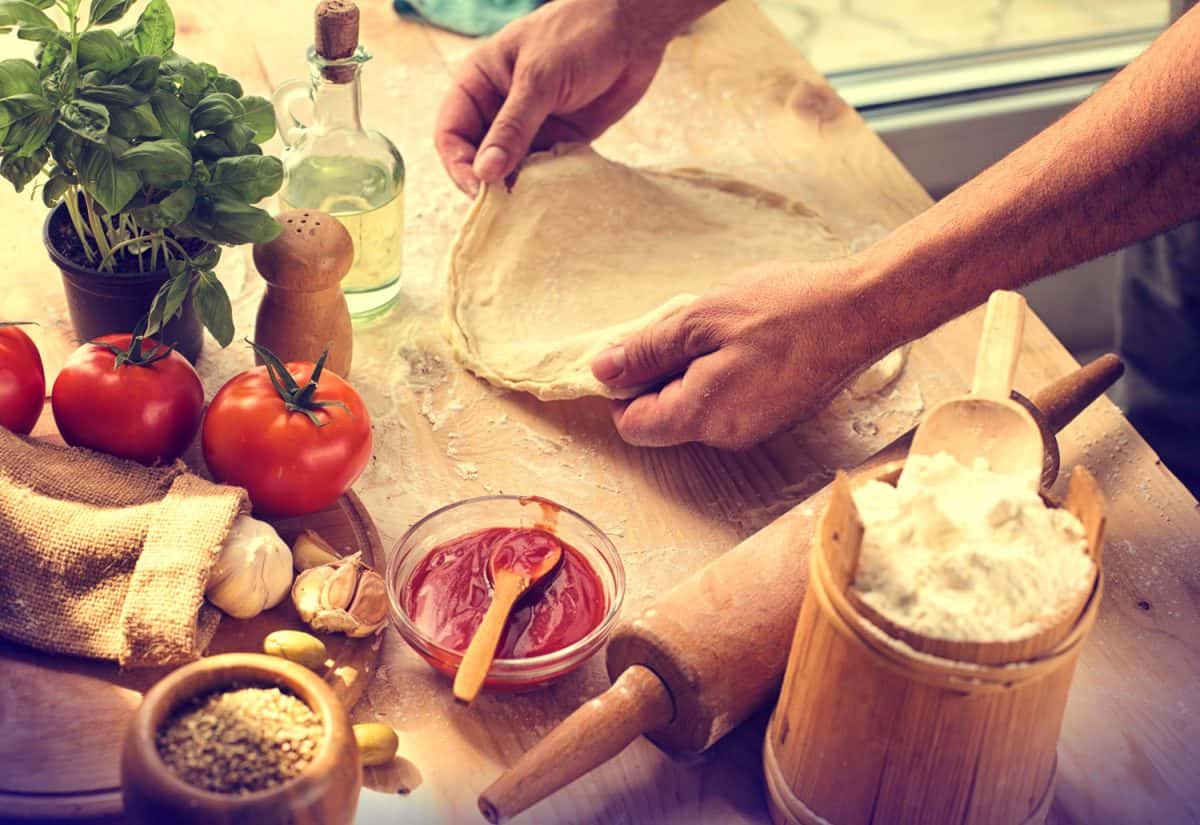It's not just the tangy tomato and gooey mozzarella that make pizza a perfect food. You need a scrumptious crust, and that starts by treating your pizza dough right. Is it okay to leave a pizza dough out overnight? We've done the research, and here's what you need to know.
Pizza dough can be left out overnight if it doesn't contain eggs or dairy, but the quality of the dough might suffer. Storing pizza dough in the refrigerator will keep it from over proofing and can improve the flavor and texture of the final crust.
It turns out that dough storage isn't just a matter of convenience; it can be the recipe for a pizza deserving of a chef's kiss. In this article, we'll see how leaving your dough at room temperature and the refrigerator affect your crust. We'll also look at the proper method for storing and even freezing pizza dough. Keep reading to get each piece of the pie.

How long can pizza dough be left out at room temperature?

How long you can leave your pizza dough out will depend on a number of factors. The temperature of your kitchen, the amount of yeast in the dough, and the presence of enriching ingredients in the dough will all play a role.
As a general rule, most pizza doughs can be left at room temperature for two to four hours before they start to over proof. If you aren't concerned about over proofing your dough, you can even leave most doughs out as long as 18 hours. However, remember that the texture of the crust will suffer.
If your dough is enriched with eggs or dairy, such as this pizza crust recipe from All Recipes, you should not leave it out for more than two hours. These ingredients can spoil if left at room temperature for too long.
For best results, you'll want to stick to the times called for in your recipe. These usually range between 30 minutes and two hours. For example, this recipe from Sugar Spun Run only calls for a 30-minute rise, whereas this one from Sally's Baking Recipes needs 60-90 minutes to rise.
It is possible to slow down the time needed for the dough to rise. This way, you can let the dough rest for longer without over proofing.
One method is to simply use less yeast. The smaller amount of yeast will need more time to rise your dough. It may take some trial and error to get the amount of yeast right for your preferred rising time.
Another method is to ditch the room temperature rise and look to something colder—the refrigerator.
Does pizza dough need to be refrigerated?
It is possible to leave most pizza doughs out overnight. However, the refrigerator is your best bet to avoid over proofing dough you won't use the same day. In fact, refrigerating your dough can improve its texture, flavor, and even its color.
Letting your dough rise in the fridge instead of on the counter is known as "cold fermentation." The chilly temperatures in your icebox slow down the fermentation process. This means you'll want to make the dough at least a day ahead, but many recipes call for several days of cold fermentation.
Why the wait? Yeast works slower at lower temperatures, but it also creates more desirable flavors in the dough. The flavor will be deeper and richer after a slow ferment as opposed to a hasty one.
This long wait also gives enzymes in the flour more time to break up proteins. These proteins start out bunched together, like a tangled ball of yarn. The enzymes effectively untangle them, letting them form a net-like matrix with other proteins. The end result? A stronger gluten structure and improved texture.
That explains the improved flavor and texture, but what about the color? Cold-fermented pizza dough tends to be more golden brown overall and has more dark blisters typical of high-quality pizza.
This is a side effect of the improved gluten structure. That net of proteins in the dough catches air bubbles better, stretching out like bubble gum. Then the layer of dough that catches the bubbles cooks faster, meaning it can get golden or dark brown faster without drying out the inside of the crust.
How long can you refrigerate pizza dough?
We've seen how refrigerating can improve your dough, but there must be an upper limit. When do you reach too much of a good thing?
After studying this topic, J. Kenji López-Alt at Serious Eats found that three to five days in the fridge resulted in the best crust. At six days, the quality started to deteriorate and the dough took on a funky aroma. By ten days, the yeast had died off enough that the dough didn't rise and the crust had an unpleasant sour flavor.
Depending on the temperature in your refrigerator, you might find you get the same results in more or less time. In general, five days seems to be a good rule of thumb for when to use your refrigerated dough.
What happens if you leave pizza dough out too long?

A pizza dough that is left out too long will not rise much in the oven. This can leave you with a thin, tough crust instead of a fluffy, chewy one. The reason for this is that the dough is over proofed.
A few things happen while the dough is proofing (also known as "rising" or "fermenting"). Yeast in the dough eats up the carbohydrates and releases carbon dioxide and a small amount of alcohol. The release of gas is what causes the dough to increase in size while proofing.
At the same time, the gluten in the dough relaxes. This allows the dough to become more elastic. The gluten relaxing is the same reason dough is easier to stretch if it rests after kneading.
Both of these things are desirable in the right quantity. However, if you leave the dough out too long, the dough will have too much gas and too little strength. This leads to the dough collapsing in the oven instead of springing, resulting in a flat, tough crust.
Getting the rise right for your dough is essential to great pizza, but it's not the only factor to consider. Check out this article for more tips on how to make your perfect pizza: Pizza Tray VS Stone – What Are The Differences?
How do you store homemade pizza dough?

We've seen that the refrigerator might be the key to great pizza dough, but you can't just plop it in there. There are a few options for how to keep your dough fresh in the fridge.
In all cases, you'll want to first form a ball with the dough. If you've made enough dough for multiple pizzas, divide it and form a ball for each pizza.
Next, you'll coat each ball in a little olive oil. This will help prevent it from drying out. Then you have a few options. You can wrap each dough ball individually in plastic wrap, you can put each one in a bowl and seal it with plastic wrap, or you can put each one in an airtight container.
Regardless of the method you choose, make sure the seal is airtight. Even with the coating of oil, your dough can dry out in the fridge.
When you are ready to use your dough, simply pull it out and let it rest at room temperature for 20-30 minutes.
Proper storage isn't just essential for your dough. If you've got leftover pizza, make sure you check out this post to learn the food safety essentials and proper storage techniques to keep you safe and satisfied: Does Pizza Go Bad If Left Out Overnight?
Can you freeze pizza dough?
If you have more dough than you will use in the next five days, you can store it longer by freezing it.
As before, you'll want to form a ball of dough for each pizza and coat it in oil. Then, place a piece of parchment paper on a tray and place the dough balls on the paper. Transfer this to the freezer for three hours or until the balls are frozen.
Once frozen, you can transfer the balls into a zip-top freezer bag. Remove as much as possible from the bag and keep them in the freezer for up to three months.
The night before using your frozen dough, place it in a container in the refrigerator to thaw. As with the refrigerated dough, let it rest at room temperature for 20-30 minutes before forming your pizza.
Final Thoughts

From Naples to New York, great pizza starts with great pizza dough. Now you know more about how to rise and store your dough. We've also seen that the refrigerator doesn't simply store your dough. Through the magic of cold fermentation, it can bring a great crust to the table.
With this knowledge in hand, you'll be well on your way to your own personal pizza paradise. Happy cooking and buon appetito!


![Chef spreading tomato sauce in the pizza dough, How Much Pizza Dough Per Pizza? [By Pizza Size]](https://kitchenseer.com/wp-content/uploads/2022/02/Chef-spreading-tomato-sauce-in-the-pizza-dough-250x250.jpg)



